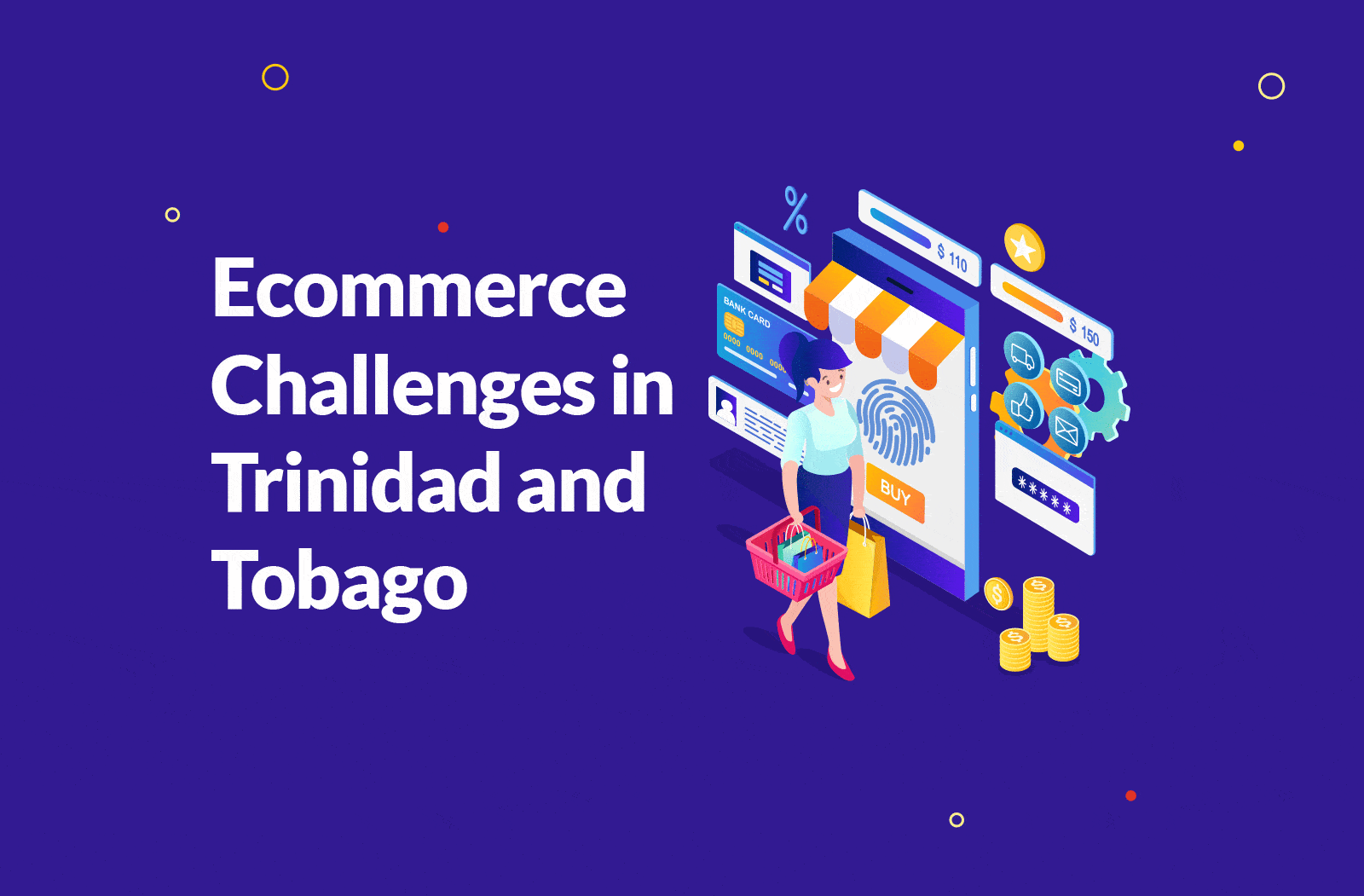
With government support, particularly around Strategic Thrusts 1 (Improving Connectivity) and 4 (Fostering Economic Development), ecommerce itself in Trinidad & Tobago is evolving, and it’s becoming easier for businesses to set up an online store...
Global retail ecommerce sales are expected to hit almost $US3.5 trillion in 2019, accounting for almost 14% of all retail sales. But in Trinidad and Tobago, ecommerce is barely factoring as a percentage of retail sales – even though there are a limited number of local stores offering ecommerce, residents of T&T are preferring to buy from US retailers for better quality, variety, and price. In 2017, the government estimated that T&T consumers spent approximately $US500 million annually on U.S. purchases via ecommerce. However, in the 2017 Budget Statement, the Minister of Finance said there were 31 courier companies (offering US addresses) who pulled in over $US1 billion a year. Whether $500 million or $1 billion, it is a lot of commerce finding its way out of T&T.
So why is this the case? The rest of the developed world is steaming ahead with ecommerce, and as an industry, it is increasing by trillions of dollars every year. Yet sales in Trinidad are negligible. There are two main reasons why it’s not taking off at the moment.
The first is a government issue, based around the lack of regulation and frameworks for the set up of ecommerce. There are also related issues around businesses themselves for the implementation, maintenance, and training of resources to be able to accommodate a new wave of ecommerce selling.
The second is more of a socioeconomic issue. Many customers aren’t used to buying online, and prefer the ease, personal nature, and availability of local, in-store businesses; and even if they do prefer to buy online, they don’t trust the process within the Caribbean – the websites, the payment gateways, return policies, or even the quality of the goods themselves.
What are some of the regulatory challenges of ecommerce in Trinidad and Tobago, and how can they be overcome?
- A lack of regulation and protections around ecommerce
- No Electronic Funds Transfer framework
- Limited funding from banks skeptical of ecommerce industry
- Inadequate connectivity infrastructure
What is the government doing about the regulation of the local ecommerce industry?
The government put forward the National Ecommerce Strategy 2017-2021 which addresses the trade barriers businesses are facing around ecommerce. In it, the Government states “(We) understand the urgent need to expand the awareness and utilization of ecommerce, as a means to increase commercial activity and promote entrepreneurship and trade”.
The IDB (Inter-American Development Bank) recommended three policy measures for Latin America and the Caribbean to prepare us for the digital economy:
- to remove regulation barriers;
- to upskill human resources and fix/enhance the physical infrastructure;
- and look at the export promotions and credits of online sellers.
As a result of this, the Government of Trinidad and Tobago proposed a five-pronged plan to create an environment that promotes online commerce. The goals of the National ECommerce Strategy 2017-2021 are:
- An effective regulatory environment for ecommerce
- Implementation of EFT framework
- Increased private sector participation in ecommerce
- Increased consumer awareness and confidence in ecommerce
- Enhanced ICT infrastructure for commercial activities
There are a number of measures in effect that aim to secure the legality of the ecommerce trade in Trinidad and Tobago. The Government created a National Development Strategy (Vision 2030) which has a central goal to take the country to ‘first world nation status’. Information and Communication Technologies play a critical part in this, and so the National ICT Plan 2017-2021 was developed. Called “fast forward II”. It’s a five-year program that has five Strategic Thrusts centered around infrastructure, digital literacy, government-led online services, private sector adoption of ICT, and using ICT for social and environmental challenges.
With government support, particularly around Strategic Thrusts 1 – Improving Connectivity and 4 – Fostering Economic Development, ecommerce itself in Trinidad & Tobago is evolving, and it’s becoming easier for businesses to set up an online store. There are online hosting platforms available to make store setup more straightforward; five of the local commercial banks provide payment gateway options in order to accept online payments; and a local version of PayPal (WiPay) has been established to accept payments using credit cards, bank accounts, and cash vouchers.
The Consumer
How will the consumer mindset change to allow ecommerce as part of its retail strategy?
The hope is that once the regulatory issues have been ironed out, the larger local corporations will get on board and begin to push their ecommerce offering. As customers begin to trust these big businesses, and appreciate the speed, variety, and convenience of shopping online, more micro, small and medium-sized business enterprises will begin to appreciate the increased visibility and opportunities that ecommerce provides.
Some of these challenges will remain though – businesses need to work hard to get the logistics perfect and work out inventory levels, reduce delivery times and create a viable return policy; provide an optimal technological experience for their customers, that is in line with what they’ve come to expect from international ecommerce sites; and ensure that systems, including payment gateways, are safe and secure to engender consumer confidence.
The Government is also working to address consumer trust online by including an action point in the National Strategy for Ecommerce that includes a new Consumer Protection Act (proposed as the Consumer Policy for Trinidad and Tobago as of March 18, 2018). Other measures include:
- an online Consumer Affairs portal
- a series of public lectures on online trade practices and contract terms
- a media advertising campaign (including social media) on ecommerce issues,
- and consumer tips.
What are some of the consumer challenges of ecommerce in Trinidad and Tobago, and how can they be overcome?
With ecommerce development, many of the familiar shopping processes are new, different, and require some hurdling:
Shopping Process | Instore | Online |
Shopfront | Bricks and mortar stores have a shopfront, often on a busy street or in a mall, allowing customers to simply walk in. | Customers need to use a search engine and type in either the store they’re looking for, or the item they want. For businesses looking to get into ecommerce, it’s important to look at Search Engine Optimization (SEO) – essentially, improving the way Google looks at their site to present it as an option for users who have searched for the type of products they sell. |
Browse | Customers are able to walk around the store, discovering items at their leisure, usually grouped into familiar categories. | Businesses should research popular categories and put them upfront to make it easy for customers to find what they’re looking for. They should include a prominent search bar, and then present other items that people frequently buy with that item – this is known as upselling and is a proven method of increasing conversions.
|
Touch | Customers are able to use touch, smell, sight, and sound to decide if an item is right for them. | To turn browsers into buyers, online stores should include as much detail as they can in product descriptions, as well as multiple photos or videos – not only will it help customers make the right decision, it is also good for their SEO. Some well-established clothing retailers worldwide allow customers to order and try on clothes, then send back free of charge for a full refund if they’re unhappy with the purchase.
|
Communication | Customers can talk to a shop owner, ask for advice, and speak with other customers if they are so inclined. | Businesses should include an About Us page – add photos of staff to try and create a digital connection; and have an easy to use contact page, including phone number, or use a chat bot to deal with issues on the spot. Social proof like testimonials and reviews will also help customers make their decision.
|
Price | In some businesses, customers are able to negotiate on price with the sales staff. | While haggling is not a normal part of the ecommerce process, providing discount codes and promotions are. Businesses can send out newsletters that alert people to a sale, submit promotional codes to discount aggregate sites, or provide a pop-up at the cart or checkout stage to encourage people to go through with the sale.
|
Payment | Customers are able to pay by cash or card as required. | Businesses should partner with a merchant bank who allows payments in as many different ways as possible or use a payment gateway like WiPay or PayPal. They could also offer cash on delivery. |
Delivery | Customers go home with the purchased item immediately. | Delivery costs are a huge factor in ecommerce abandonment rates throughout the world, so the important thing (if businesses can’t deliver for free) is to be upfront about it – let people know what they’ll be paying before they add to cart. |
There is definitely still work to be done on improving the state of ecommerce in Trinidad and Tobago, but we have made advances. The Government is hopefully leading the push, and big business will follow, paving the way for micro, small and medium businesses to expand their own reach and revenue. What’s equally critical is that customers gain confidence in the infrastructure and regulations to bring about a cultural shift and see ecommerce as an important cog in the wheel of transactions.
HAVE QUESTIONS ABOUT YOUR NEXT PROJECT?




